Rostov’s Church of the Savior-on-the-Sand: beauty abandoned and restored
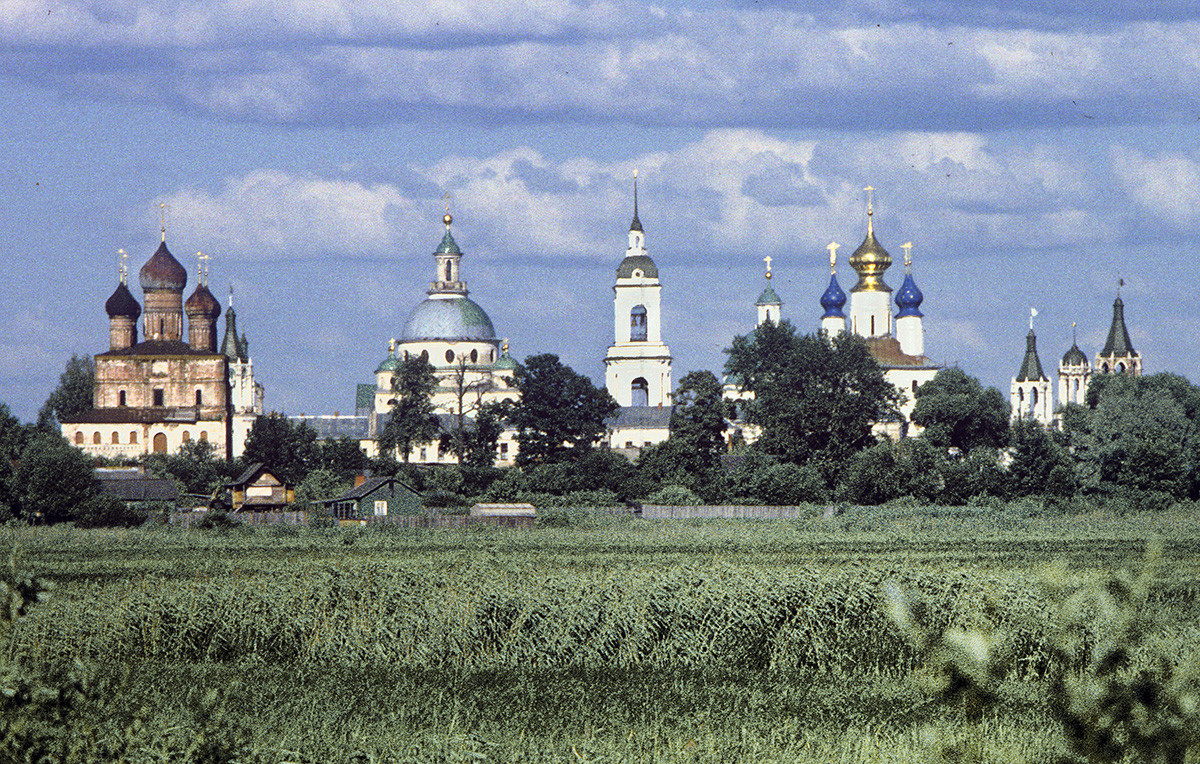
Rostov. West view of Savior-St. Yakov-St. Dimitry Monastery with Church of the Savior "on the Sand" (far left). June 28, 1995
William BrumfieldThe medieval town of Rostov is often referred to as “the Great” (Rostov Veliky) to distinguish it from the southern city Rostov-on-Don. Located some 130 miles northeast of Moscow, the town benefits from a bucolic natural setting on the north shore of Lake Nero. Nowhere is this more evident than at the Savior-St. Yakov-St. Dimitry Monastery, located on the western edge of town overlooking the lake. The Russian chemist and photographer Sergei Prokudin-Gorsky captured the beauty of the shrine during his 1911 visit. My photographs of the site were taken over a period from 1992 to 2019.
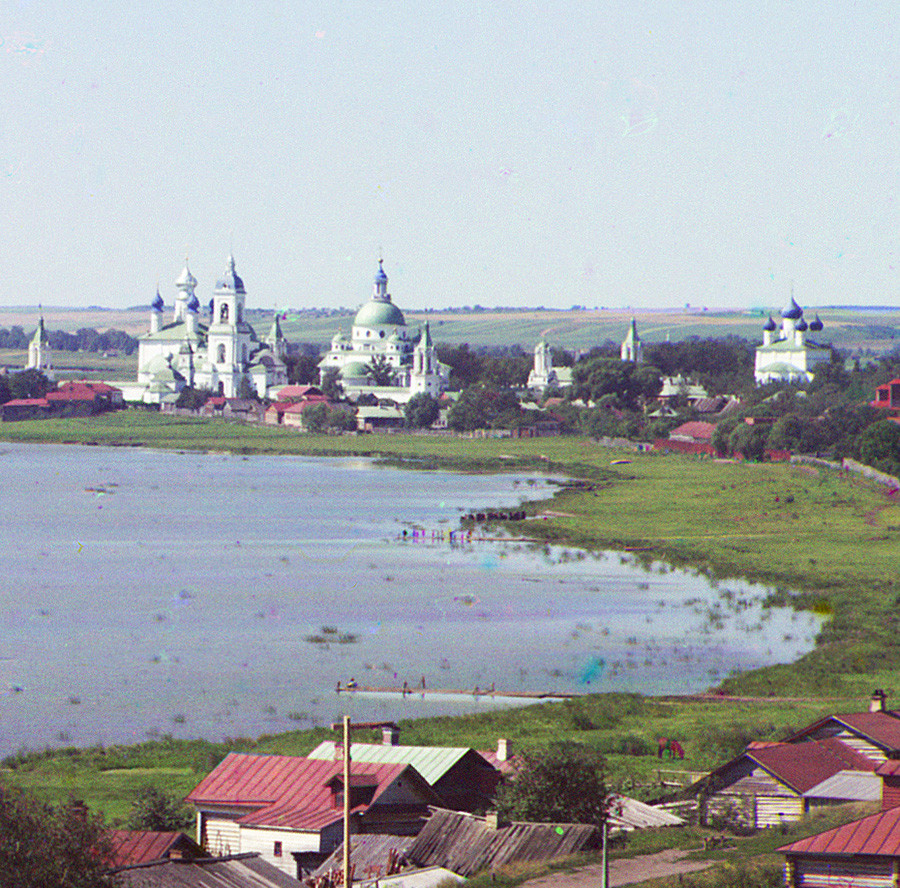
East view of Savior-St. Yakov-St. Dimitry Monastery with Church of the Savior "on the Sand" (far right). Summer 1911
Sergei Prokudin-GorskyThe town of Rostov is one of the earliest historically attested settlements in Russia and was first mentioned under the year 862 in the ancient chronicle "Tale of Bygone Years." Throughout the 10th century, Slavic settlers — primarily from the Novgorod lands — moved into this area, already inhabited by Finno-Ugric tribes.
In 988, Grand Prince Vladimir of Kiev gave the Rostov lands to one of his sons, Yaroslav “the Wise,” a major figure in the history of medieval Rus. By the middle of the 11th century, the Rostov lands had passed to Yaroslav's son Vsevolod, and Christian missionaries such as Leonty of Rostov intensified their attempt to convert the local population from pagan beliefs.
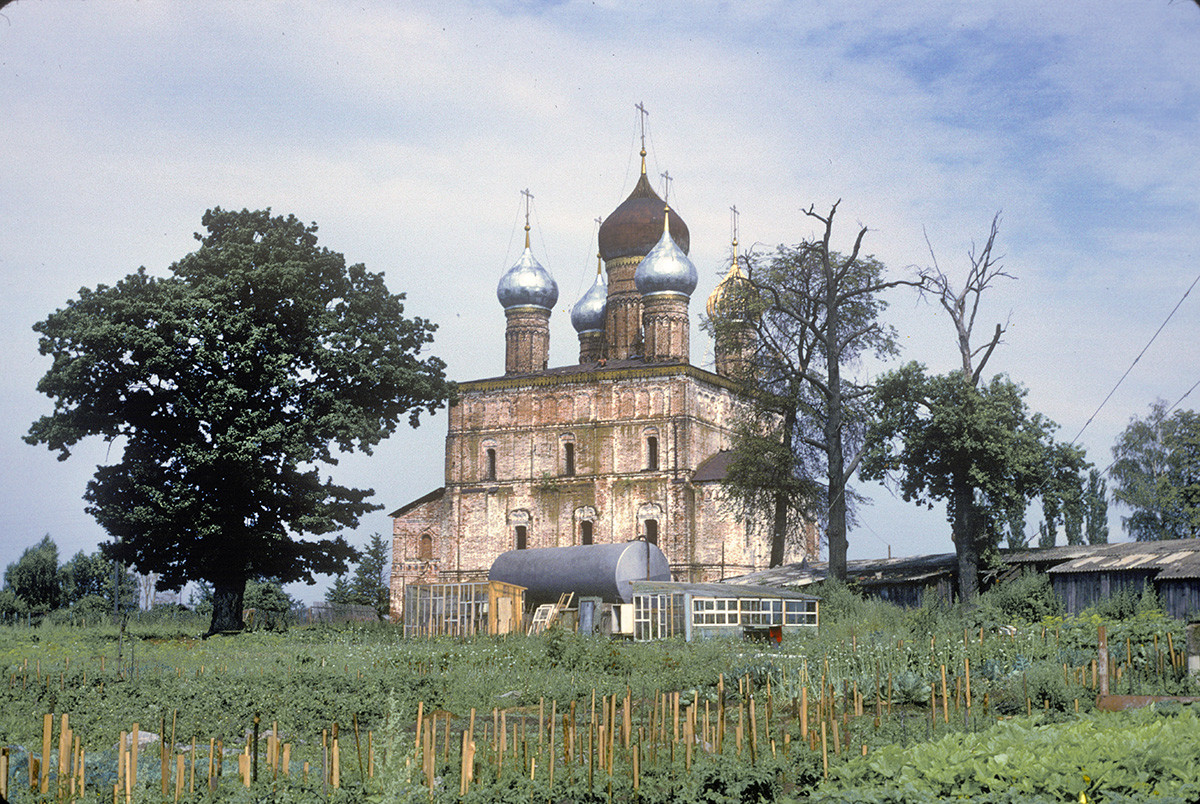
Church of the Transfiguration of the Savior "on the Sand," southeast view. July 29, 1997
William BrumfieldThe consolidation of church authority was symbolized by Rostov's Cathedral of the Dormition of the Virgin Mary, begun in the mid-12th century by Prince Andrei Bogolyubsky of Vladimir and rebuilt by Prince Konstantin Vsevolodovich in the 1220s. Although Rostov was captured during the Mongol invasion of 1237-38, the cathedral and other churches remained largely intact. Despite widespread devastation, Rostov became a center of religious learning and missionary activity, producing such pioneers as St. Stepan of Perm.
A complex and distinguished history
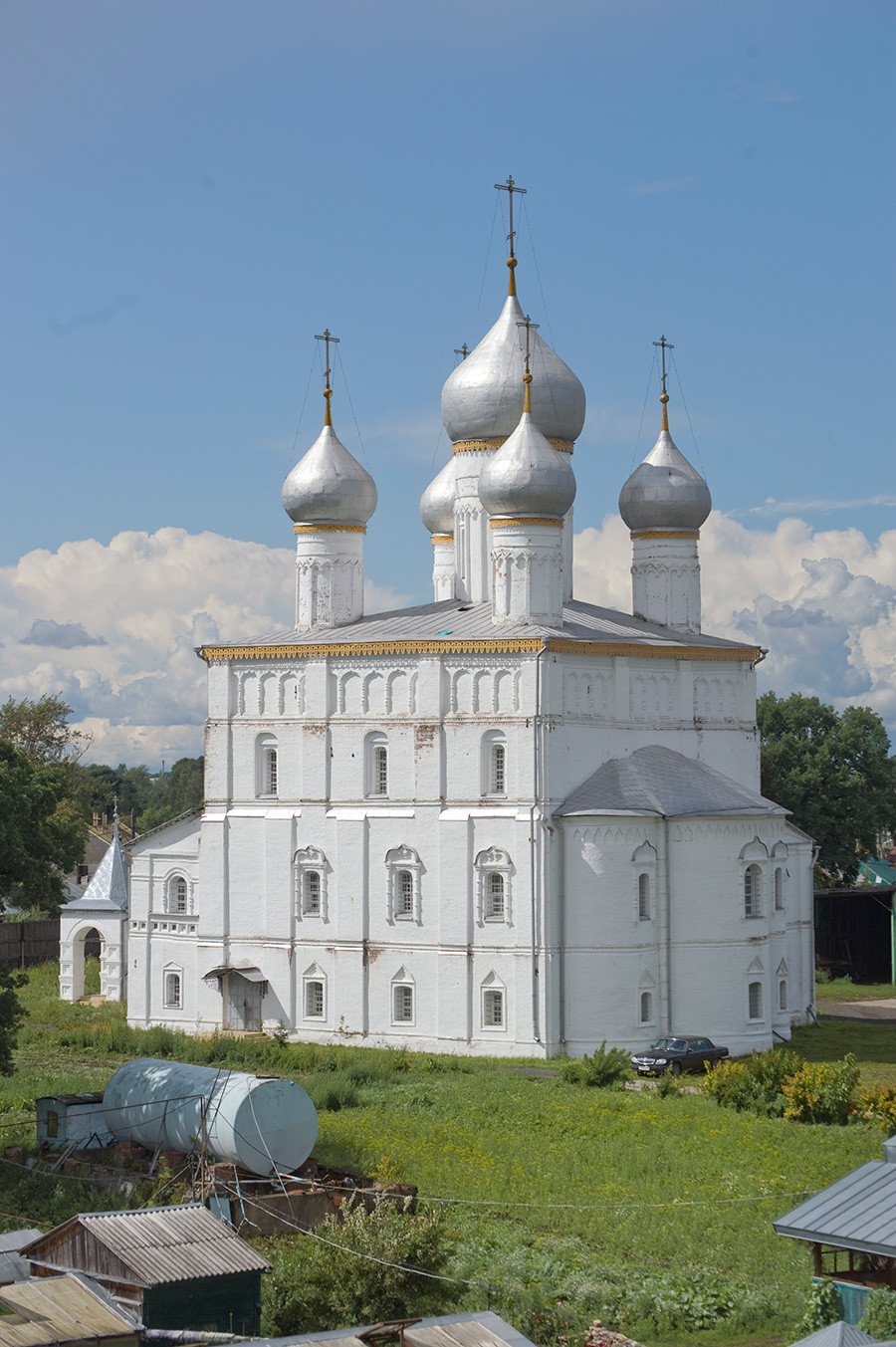
Church of the Transfiguration of the Savior "on the Sand". Southeast view from wall of Savior-St. Yakov Monastery. July 7, 2019
William BrumfieldThe earliest known monastic institution to arise after the invasion was dedicated to the Transfiguration of the Savior and given the additional name “Pesotsky” because of its location on sandy ground near the lake. (The Russian word for sand is pesok.)
This monastery was founded by Princess Maria Mikhailovna (1212?-1271) in memory of her husband, Prince Vasilko Konstantinovich of Rostov. During the 1220s, Vasilko participated in several campaigns among warring principalities that comprised the lands of ancient Rus. He also completed the new Dormition Cathedral, begun by his father Konstantin and consecrated in 1230. In early March 1238, Prince Vasilko was captured during a major battle between the Mongol forces led by Burundai and Russian forces on the River Seet (near the Volga). Refusing to accept Mongol authority, Vasilko was tortured and killed. His body was eventually recovered and returned to Rostov, where it was buried in the Dormition Cathedral. He was subsequently canonized as a martyr.
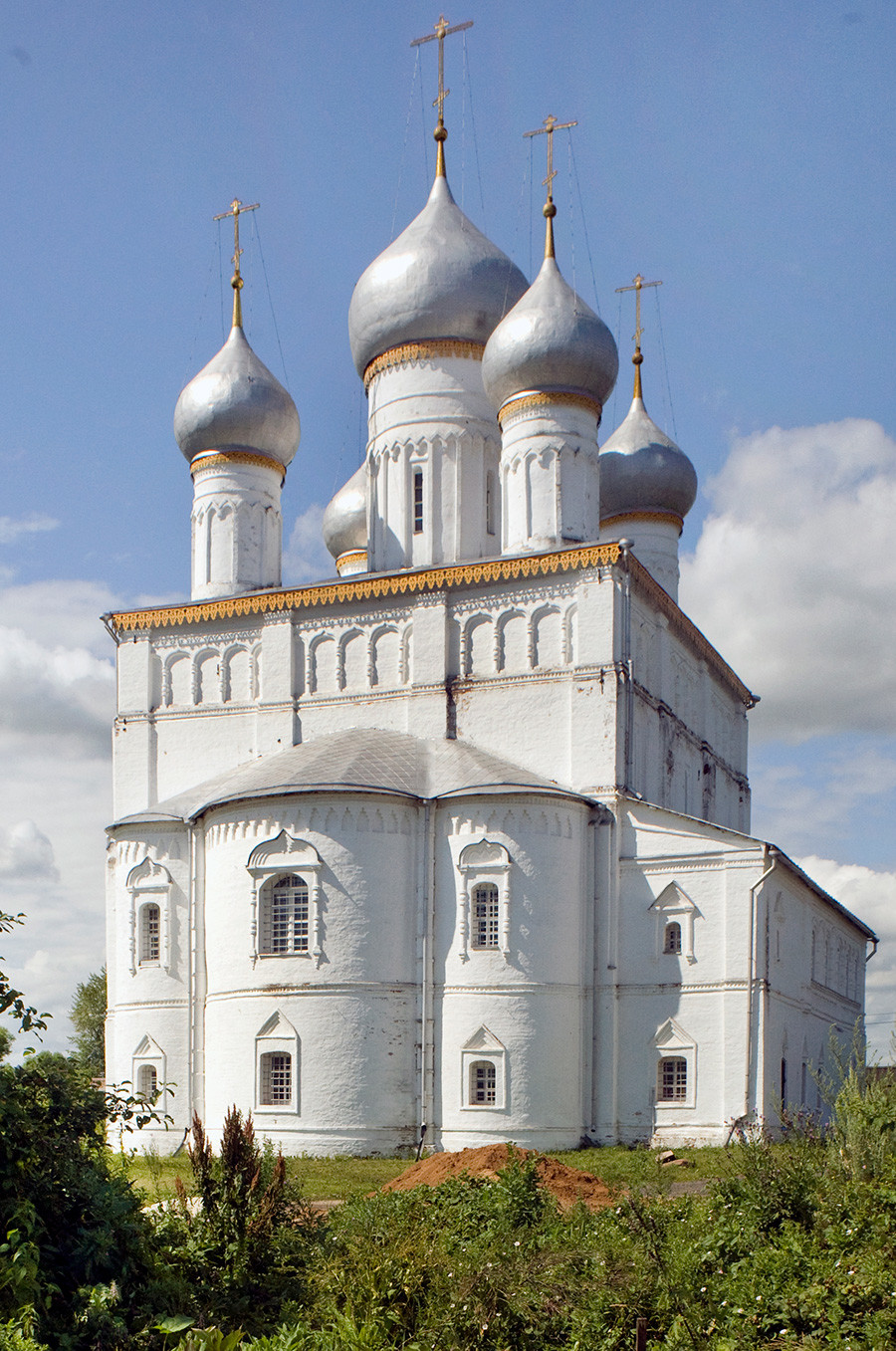
Church of the Transfiguration of the Savior "on the Sand". Northeast view. July 8, 2019
William BrumfieldAfter Vasilko’s death, Princess Maria founded the Savior Monastery in his memory. Maria, who was the daughter of Prince Mikhail of Chernigov, also participated in various enlightenment projects, such as the compiling of a chronicle with the support of Rostov’s Bishop Kirill.
Upon her death in 1271, Princess Maria was buried beneath the wooden Church of the Transfiguration of the Savior at what became known as the Savior-Pesotsky Princess Monastery in her honor. In 1278, her younger son Gleb, prince of Belozersk and Rostov, was also buried there.
The Savior on the Sands
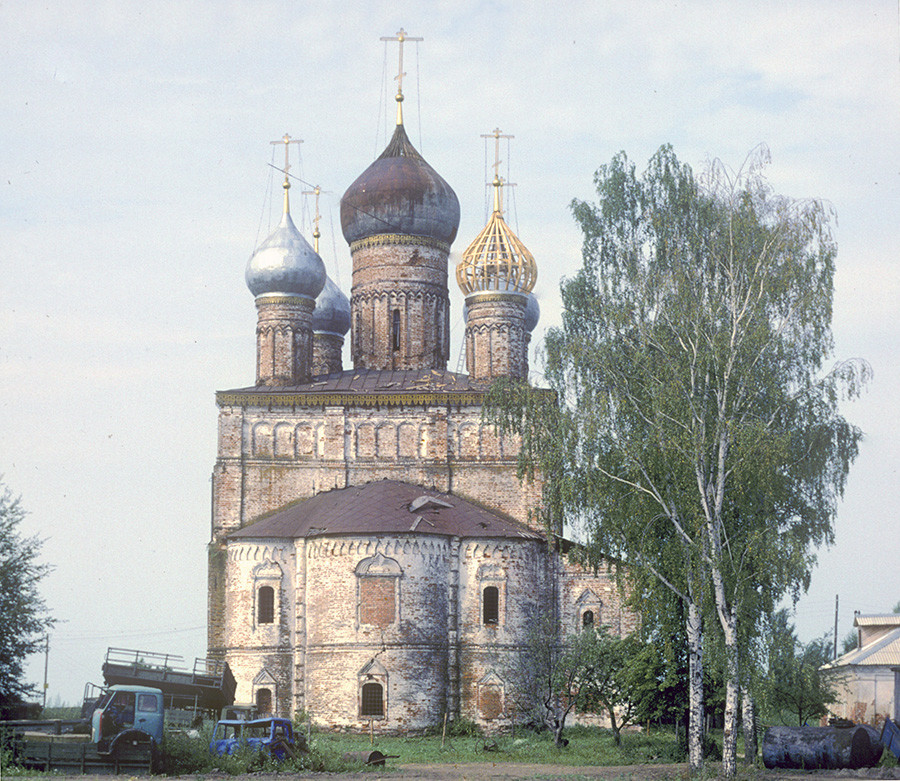
Church of the Transfiguration of the Savior "on the Sand". East view. July 29, 1997
William BrumfieldThe sole surviving structure from the Savior-Pesotsky Monastery is arguably the most picturesque church in Rostov. Popularly known as the “Savior on the Sands” (Spas na Peskakh) the Church of the Transfiguration of the Savior was built, as noted above, on sandy ground near a pond at the northwest corner of its larger monastic neighbor.
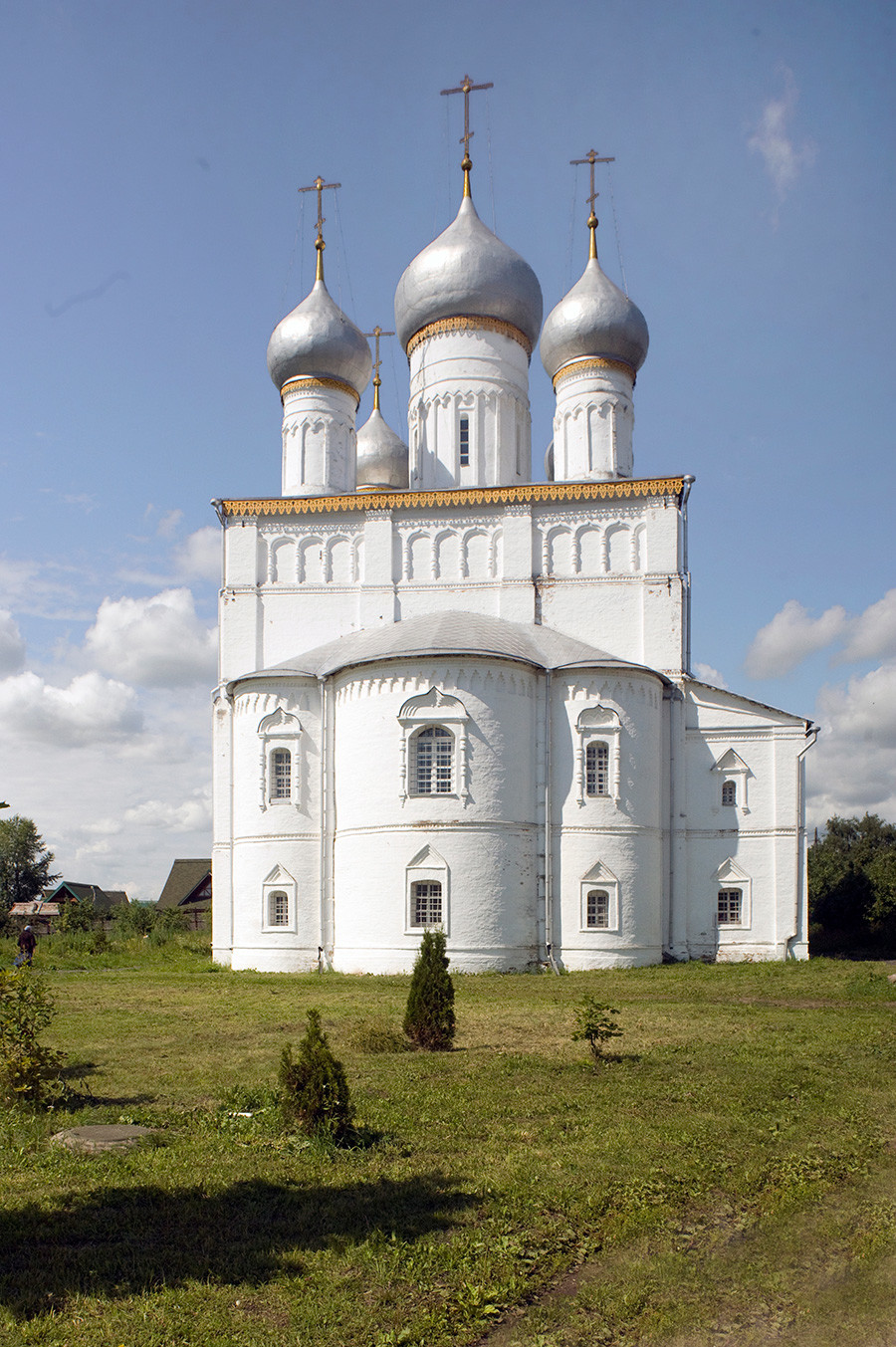
Church of the Transfiguration of the Savior "on the Sand". East view. July 8, 2019
William BrumfieldThere is some uncertainty as to the construction dates of the towering white brick structure, with its soaring crown of cupolas. A church inscription states that it was built in 1603, a few years before the sack of Rostov in 1608 during a prolonged dynastic crisis known as the Time of Troubles.
There are reasons to assume, however, that the structure was rebuilt and enlarged by the latter part of the 17th century, probably with the support of Metropolitan Jonah of Rostov. His intensive building activity included the creation of the magnificent Metropolitan’s Court (popularly known as the Rostov Kremlin).
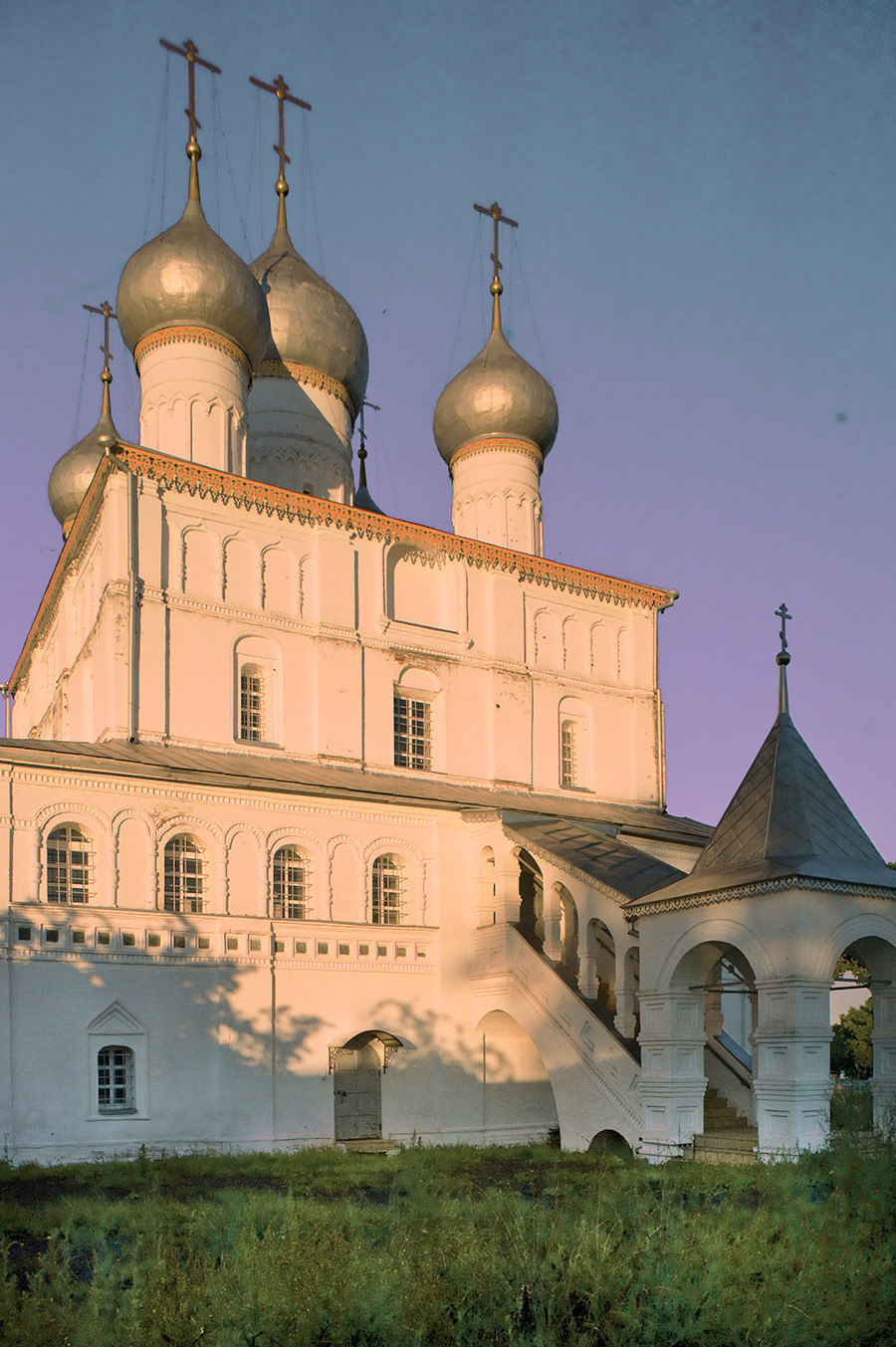
Church of the Transfiguration of the Savior "on the Sand". Northwest view in evening sunlight. July 7, 2019
William BrumfieldThe facades of the Savior Church are marked with three rows of windows, separated by vertical pilaster strips. The ground level was used for winter services, and by the late 19th century contained an altar dedicated to St. Sergius of Radonezh, the avatar of Muscovite monasticism. The upper level with the main altar rises to great height and was painted with frescoes that were repainted in 1890-91.
Prokudin-Gorsky’s photograph of the Savior Church shows its festively decorated main (west) portal. My photographs, taken over a period of three decades, include views of its elegiac state of abandonment in the early 1990s.

Church of the Transfiguration of the Savior "on the Sand". Interior, west portal with late 19th-century wall paintings. Summer 1911
Sergei Prokudin-GorskyThe Savior Church was joined in the 17th century by a large brick bell tower and a church dedicated to St. George. The fact that neither survived is directly linked to the development of its monastic neighbor.
Consolidation, closure and restoration
In 1389, another monastic retreat arose nearby through the efforts of a certain Yakov, formerly bishop of Rostov. Although there is little historically attested information, church accounts state that he withdrew to a site on Lake Nero near the Archangel Michael Church, founded by Bishop Leonty in the mid-11th century. There Yakov built a log church dedicated to the Conception of St. Anne.
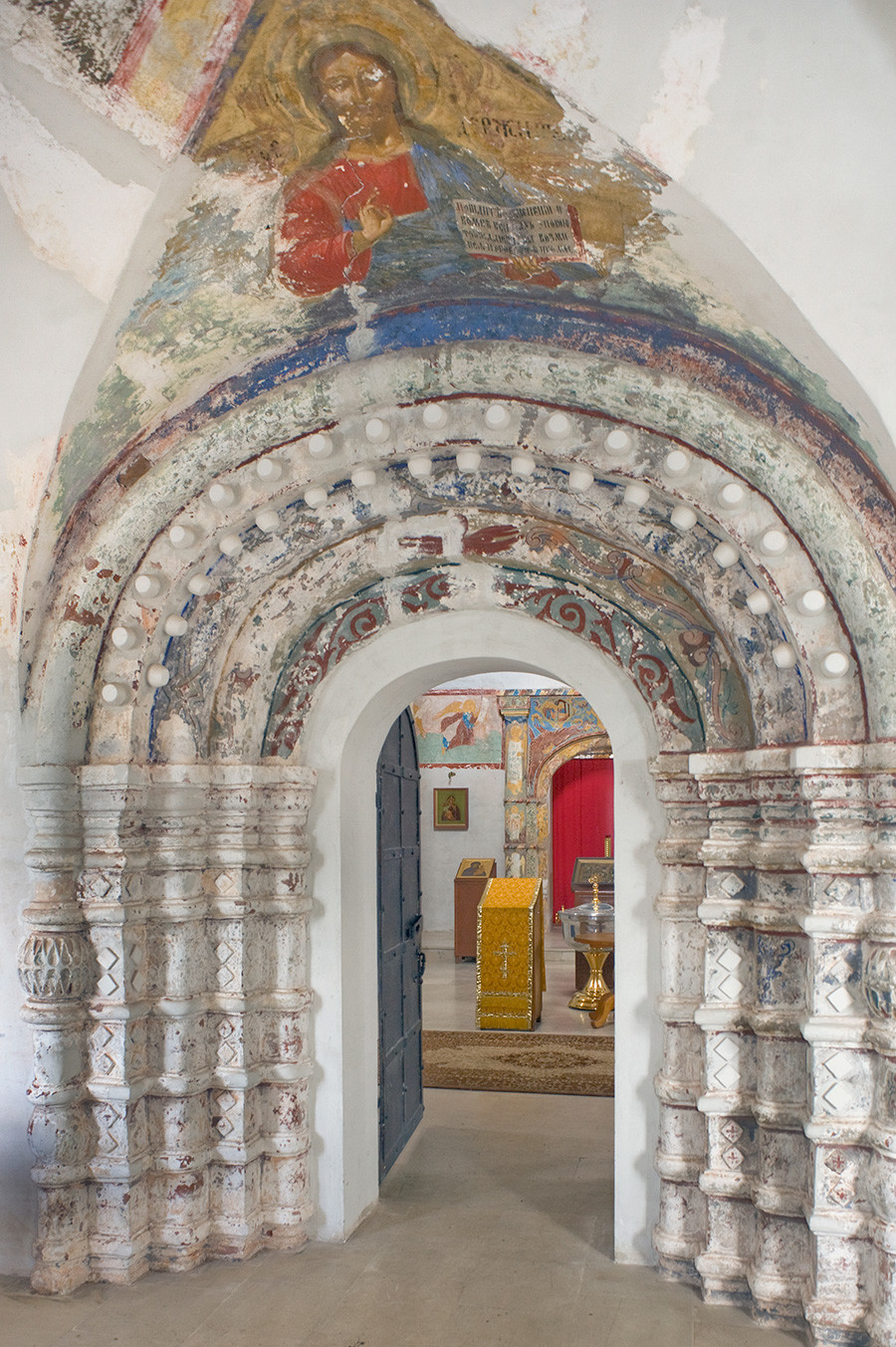
Church of the Transfiguration of the Savior "on the Sand". Interior, west portal with restored late 17th-century fresco of Christ. July 7, 2019
William BrumfieldAfter Yakov’s death in November of 1392, his remains were buried at the Conception Church and became the object of veneration by the local folk. In the late 1540s, he was canonized at the Orthodox Church convocations organized by Moscow’s Metropolitan Macarius to recognize Russian saints. The hermitage that Yakov created became known as the Conception-St. Yakov Monastery.
During the 18th century the St. Yakov Monastery underwent a major expansion that began with the arrival in 1702 of Metropolitan Dimitry (Tuptalo), a Ukrainian prelate chosen by Tsar Peter I (the Great) to the position of Metropolitan of Rostov. One of the most prominent church leaders during Peter’s reign, Dimitry was buried at the monastery in 1709. With his canonization in 1757, the St. Yakov Monastery became a pilgrimage site patronized at the highest levels of the state. Catherine the Great, for example, visited it in 1763, at the beginning of her reign.
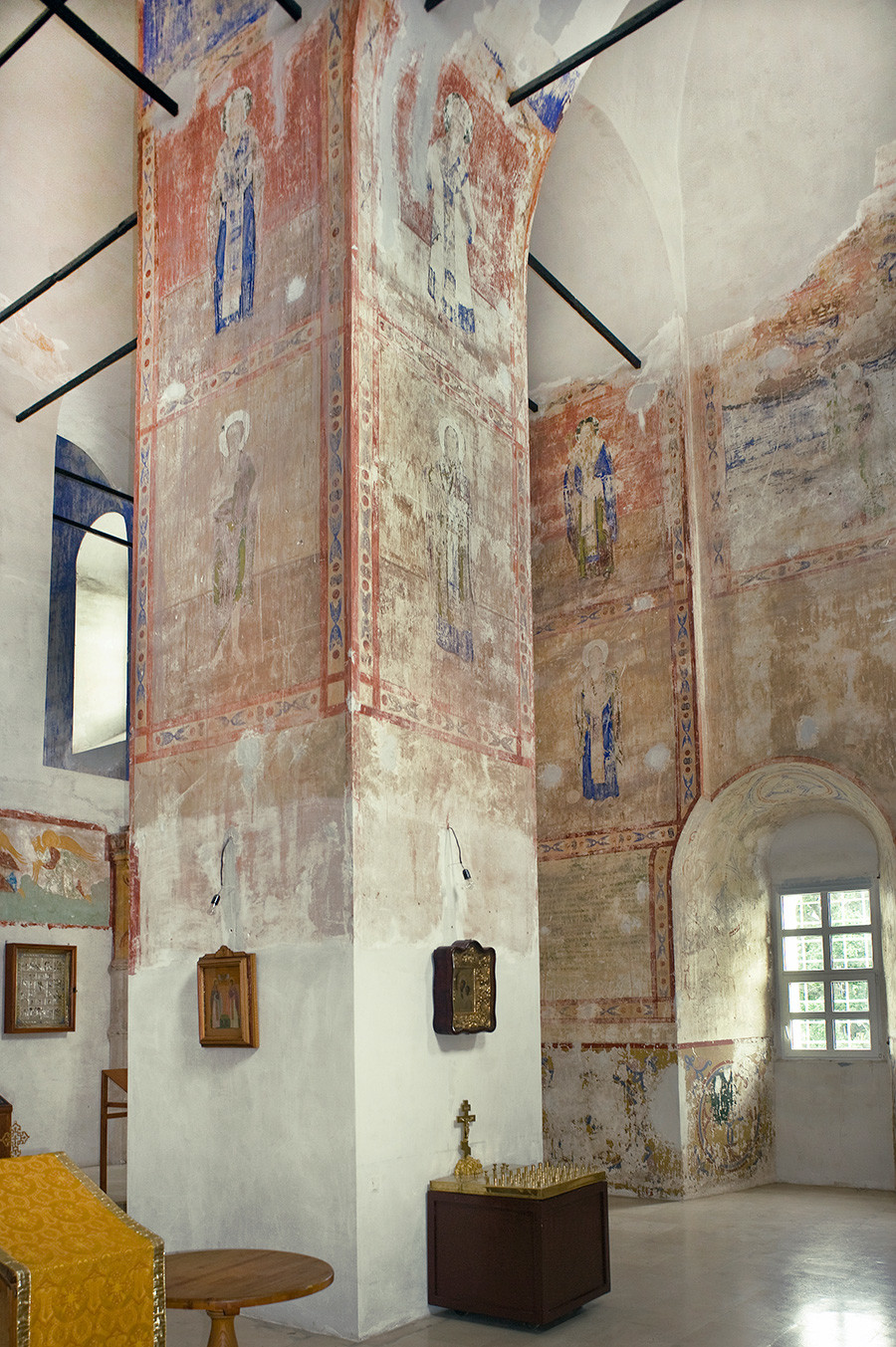
Church of the Transfiguration of the Savior "on the Sand". Interior, southwest pier with restoration of fresco remnants. July 7, 2019
William BrumfieldIn 1764, the St. Yakov Monastery was granted the property of the adjacent Savior-Pesotsky Monastery, which had been closed in the wake of Catherine’s reorganization of Russia’s monastic system. In recognition of this acquisition, the enlarged institution was renamed the Savior-St. Yakov-Conception Monastery in 1765.
However, it seemed infeasible to maintain so many additional buildings, and in 1777 the bell tower and Church of St, George were razed. Their carefully preserved bricks were used to rebuild the walls of the Savior-St. Yakov Monastery walls in the late 18th century. Fortunately, the Transfiguration of the Savior Church, built over the graves of Princess Maria and her son Gleb, was preserved.
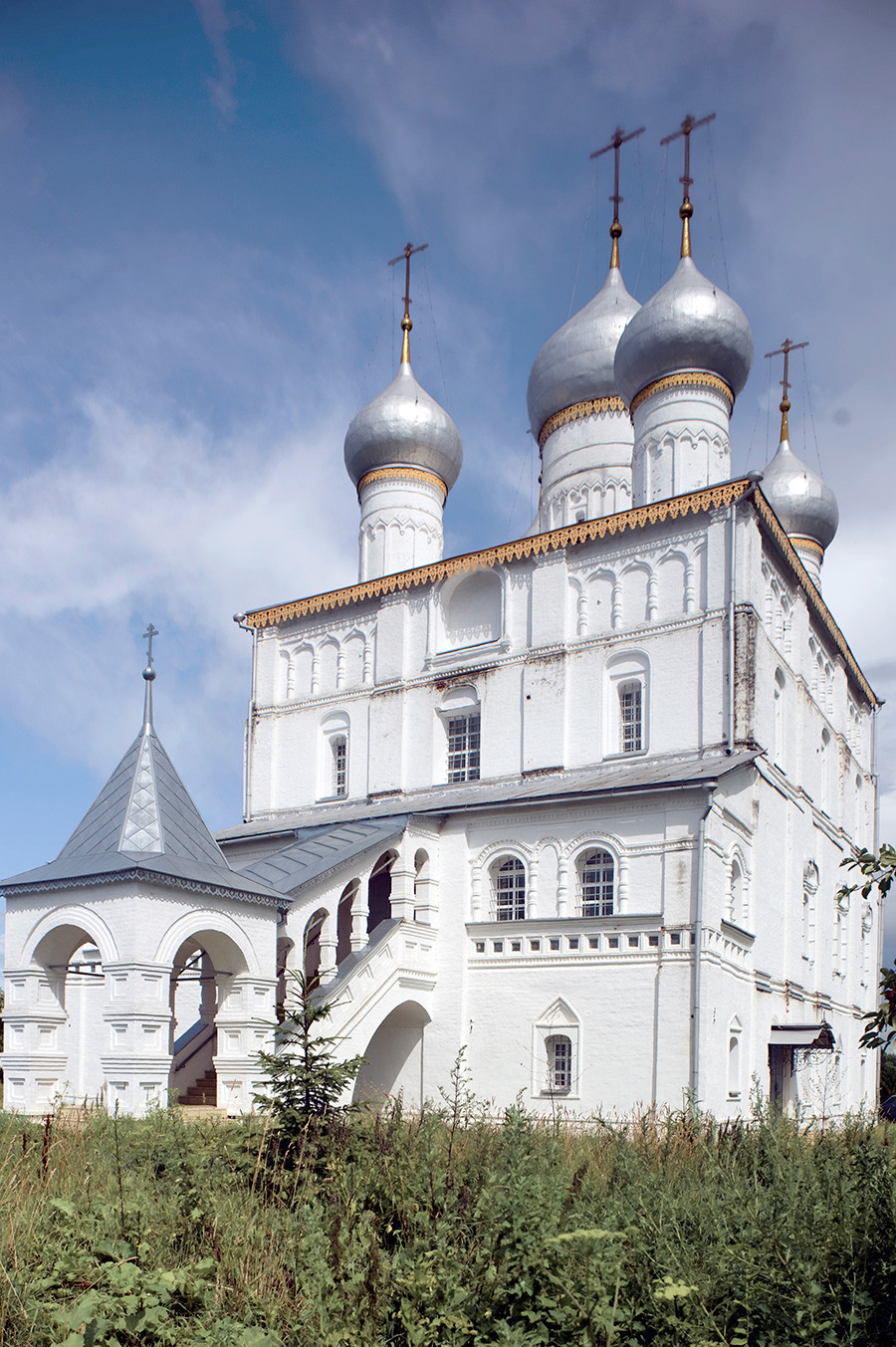
Church of the Transfiguration of the Savior "on the Sand". Southwest view with entrance porch & gallery. July 7, 2019
William BrumfieldThe prosperity of the Savior-St. Yakov Monastery came to an end with the establishment of Soviet power. After its complete closure as a religious institution in 1923, some monastery treasures were preserved by the Rostov Museum. In general, however, the monastery structures — including the Church of the Transfiguration of the Savior — were ransacked and disfigured by haphazard conversion to other uses. The extent of the neglect is evident from my photographs of the 1990s. After the return of the Savior-St. Yakov-St. Dimitry Monastery (as it is now called) to the Church in April 1991, comprehensive restoration efforts revived its position among of the prominent monastic institutions of central Russia.
Largely abandoned in the late 20th century, the Church of the Savior on the Sand underwent interior restoration in the early part of this century and was re-consecrated in 2009. It now stands with gleaming whitewashed walls, lyrically beautiful in its isolation.

Church of the Transfiguration of the Savior "on the Sand". East view with apse & cupolas. Decorative arcading on upper facade & cupola drums. July 8, 2019
William BrumfieldIn the early 20th century the Russian photographer Sergei Prokudin-Gorsky invented a complex process for color photography. Between 1903 and 1916 he traveled through the Russian Empire and took over 2,000 photographs with the new process, which involved three exposures on a glass plate. In August 1918 he left Russia with a large part of his collection of glass negatives and ultimately resettled in France. After his death in Paris in 1944, his heirs sold his collection to the Library of Congress. In the early 21st century the Library digitized the Prokudin-Gorsky Collection and made it freely available to the global public. A number of Russian websites now have versions of the collection. In 1986 the architectural historian and photographer William Brumfield organized the first exhibit of Prokudin-Gorsky photographs at the Library of Congress. Over a period of work in Russia beginning in 1970, Brumfield has photographed most of the sites visited by Prokudin-Gorsky. This series of articles will juxtapose Prokudin-Gorsky’s views of architectural monuments with photographs taken by Brumfield decades later.
If using any of Russia Beyond's content, partly or in full, always provide an active hyperlink to the original material.
Subscribe
to our newsletter!
Get the week's best stories straight to your inbox